Root Guard
Course Contents
1. Introduction to Root Guard
Root Guard Spanning Tree is a tool used to stabilize the STP topology. By using Root Guard, we can control the placement of the Root Bridge.
To explain the use case of Root Guard, let’s consider a scenario where you are working for a service provider on the right and you need to connect a customer to your infrastructure.
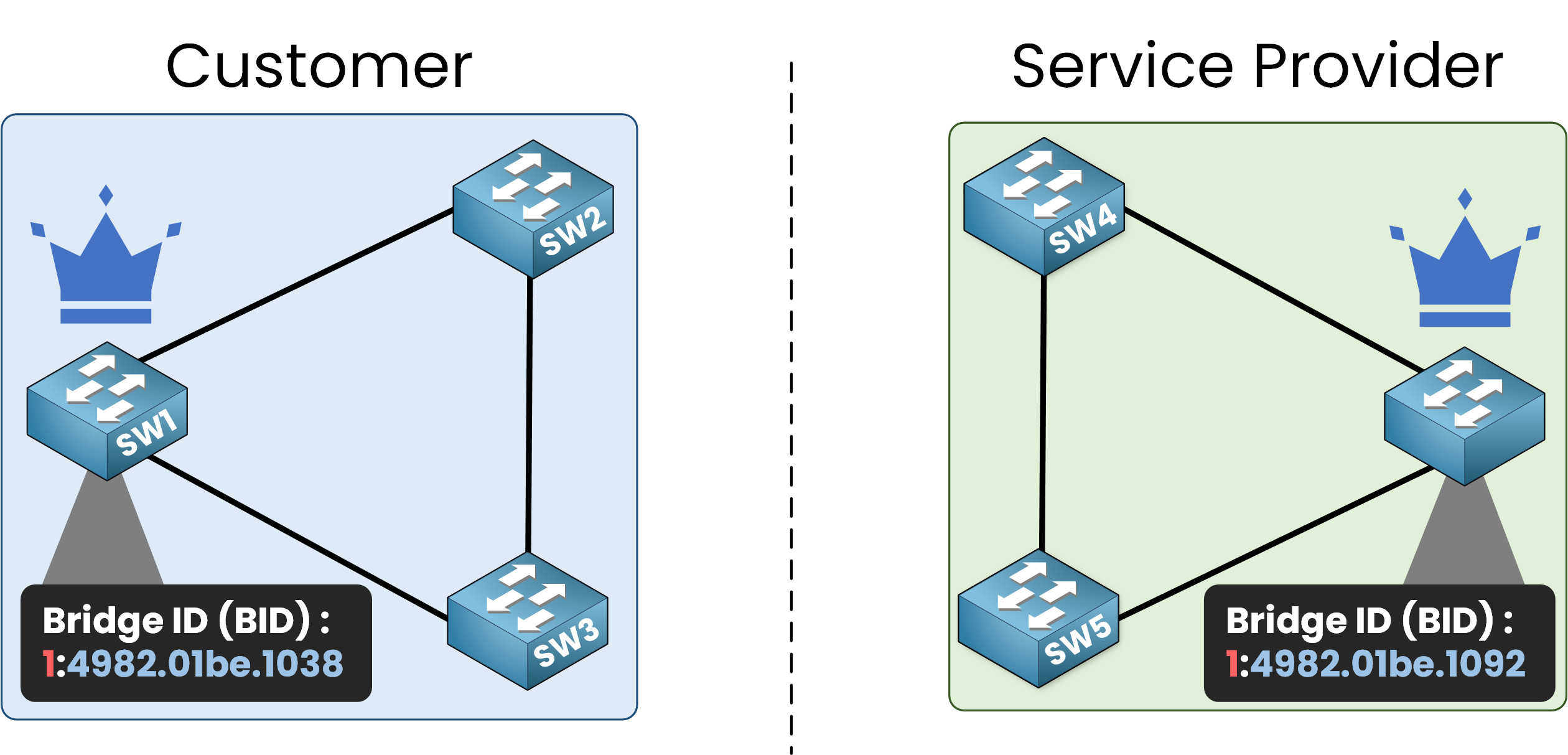
In this example, the customer requires access to the service provider’s infrastructure to reach the internet.
In the diagram, you can see two distinct STP topologies, one for each network.
When the service provider network connects to the customer network, BPDUs will start flowing between the two STP topologies.
As a service provider, we do not want our Root Bridge to be located in the customer’s network.
2. Problem Without Root Guard
Here is the connection of our topology:
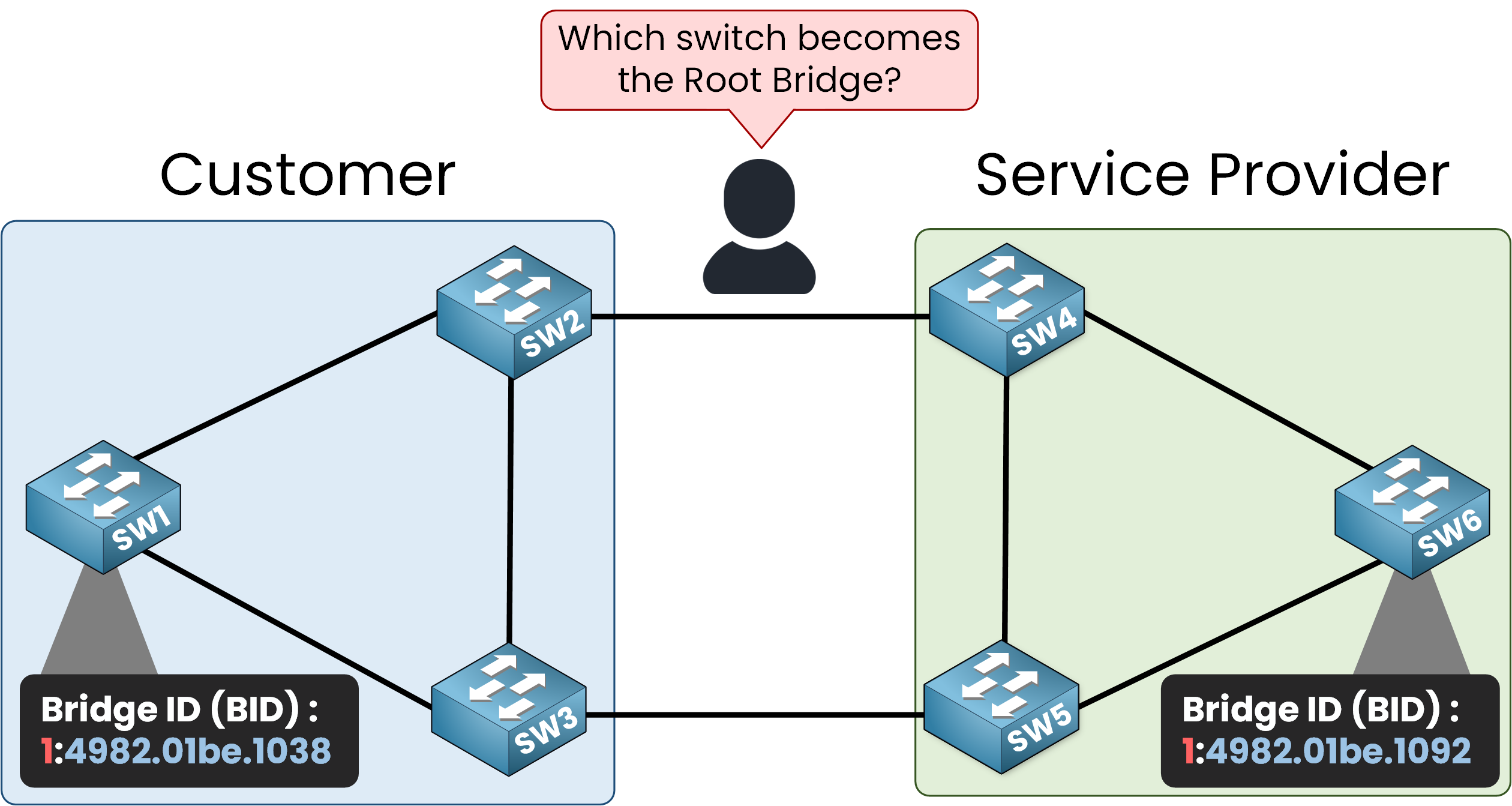
By default, Cisco switches operate using the Per VLAN Spanning Tree Plus (PVST+) protocol. This protocol creates a separate STP instance for each VLAN.
- SW6 in the service provider’s STP topology is configured as the desired Root Bridge with a priority of
0+ VLAN 1, resulting in a BID (1:4982:01be:1092). - SW1 in the customer’s STP topology is configured with a priority of
0+ VLAN 1, resulting in a BID (1:4982:01be:1038). - The other switches use the default priority (32,768 + VLAN 1).
BID Comparison
Since the switch with the lowest BID becomes the Root Bridge in the STP topology, we have the following BIDs:
- 1:4982:01be:1038 (SW1)
- 1:4982:01be:1092 (SW6)
As BPDUs are exchanged, SW1 with the lower BID claims to be the Root Bridge and SW6 recognizes it as such.
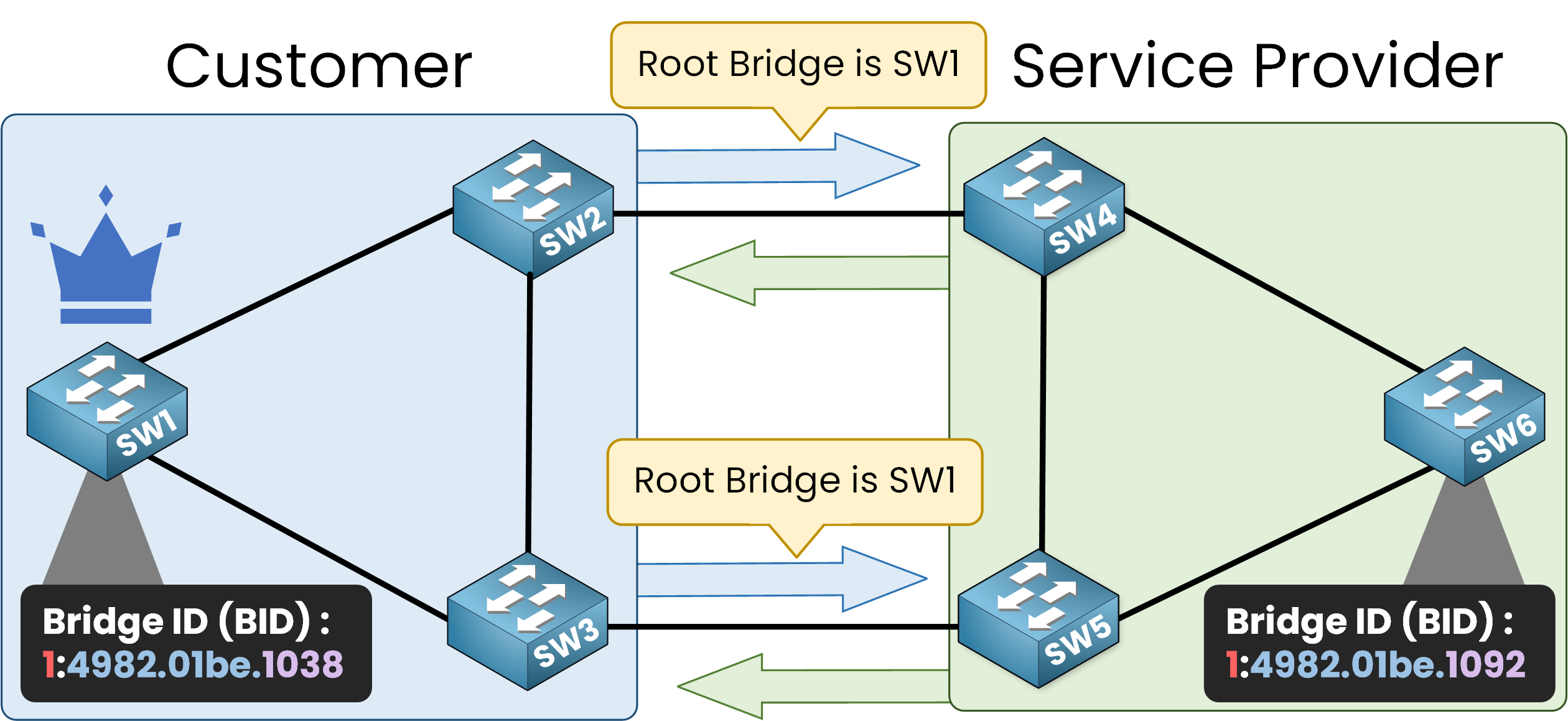
Consequences of No Security Measures
Since no security measures are enabled, the service provider’s switches (SW4, SW5, and SW6) assume that SW1 is the new Root Bridge of the topology.
This is a serious issue because all traffic will be redirected to the Root Bridge. The port roles change to align with the new topology.
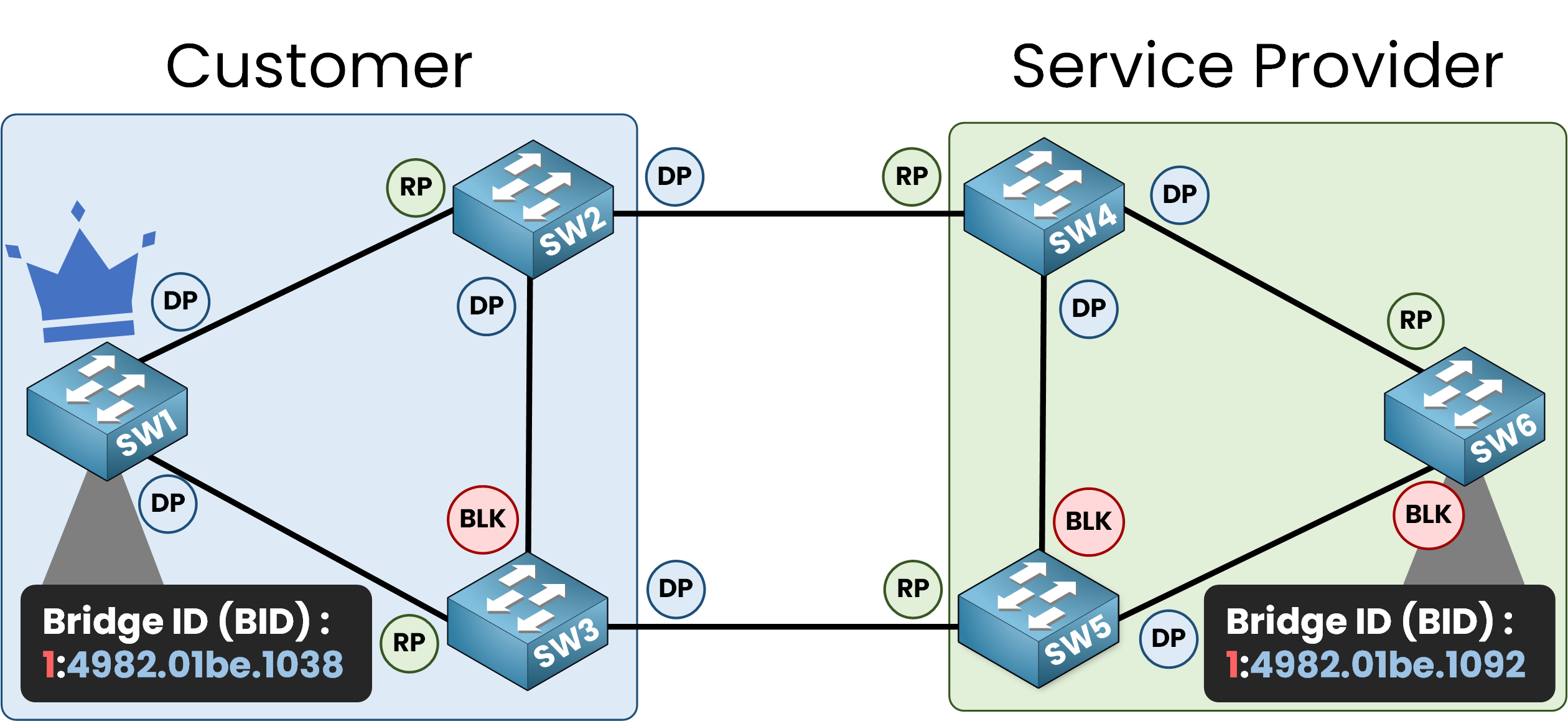
In this scenario, SW1 becomes the Root Bridge, and all traffic, even between switches like SW5 and SW6, is forwarded through SW1.
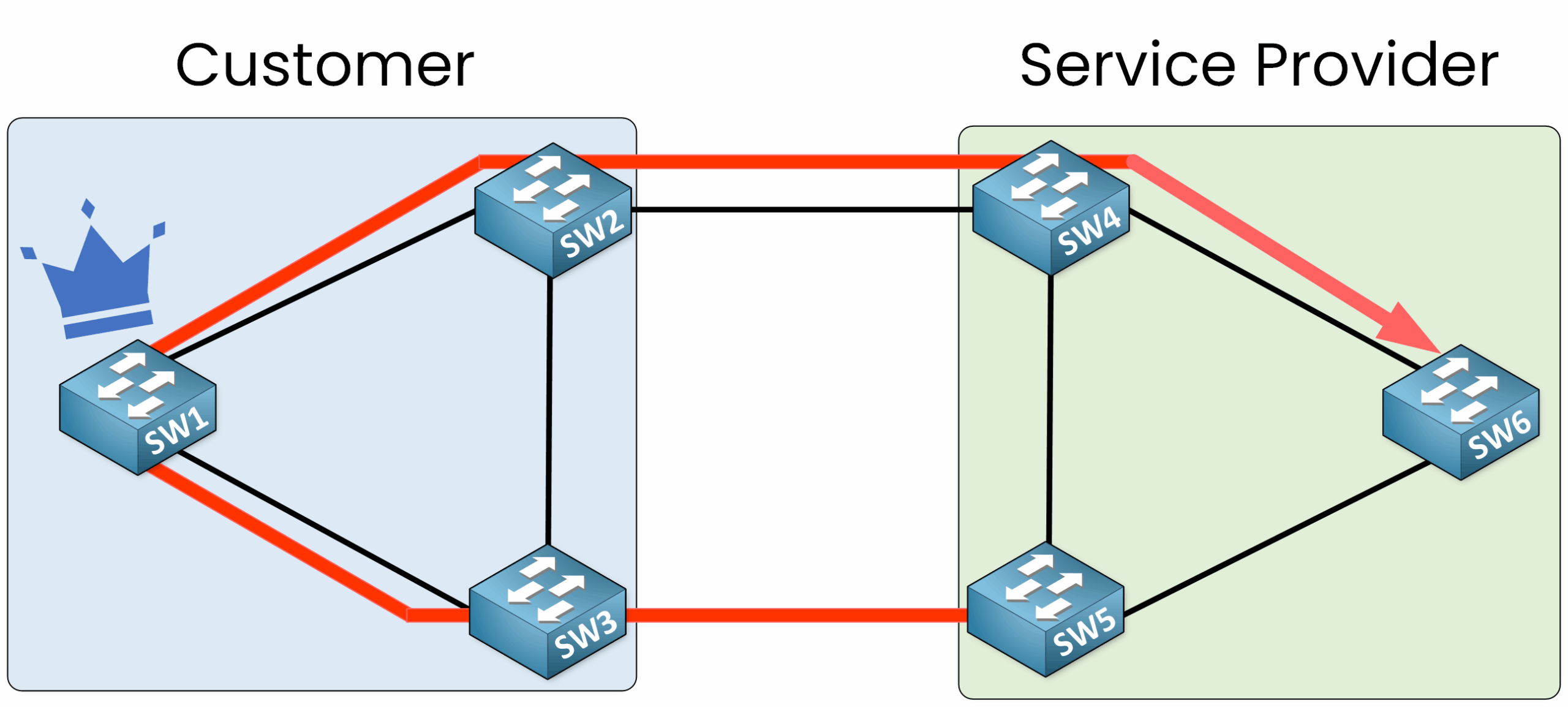
This setup is undesirable. We want to ensure that the service provider’s STP topology always retains control of the Root Bridge.
3. Root Guard to the Rescue
Root Guard prevents superior BPDUs from being accepted on specific ports by treating them as untrusted. By enabling Root Guard on the interfaces facing the customer’s network on SW4 and SW5, we can ensure the integrity of the service provider’s STP topology.
Configuration of Root Guard
Let’s configure this feature:
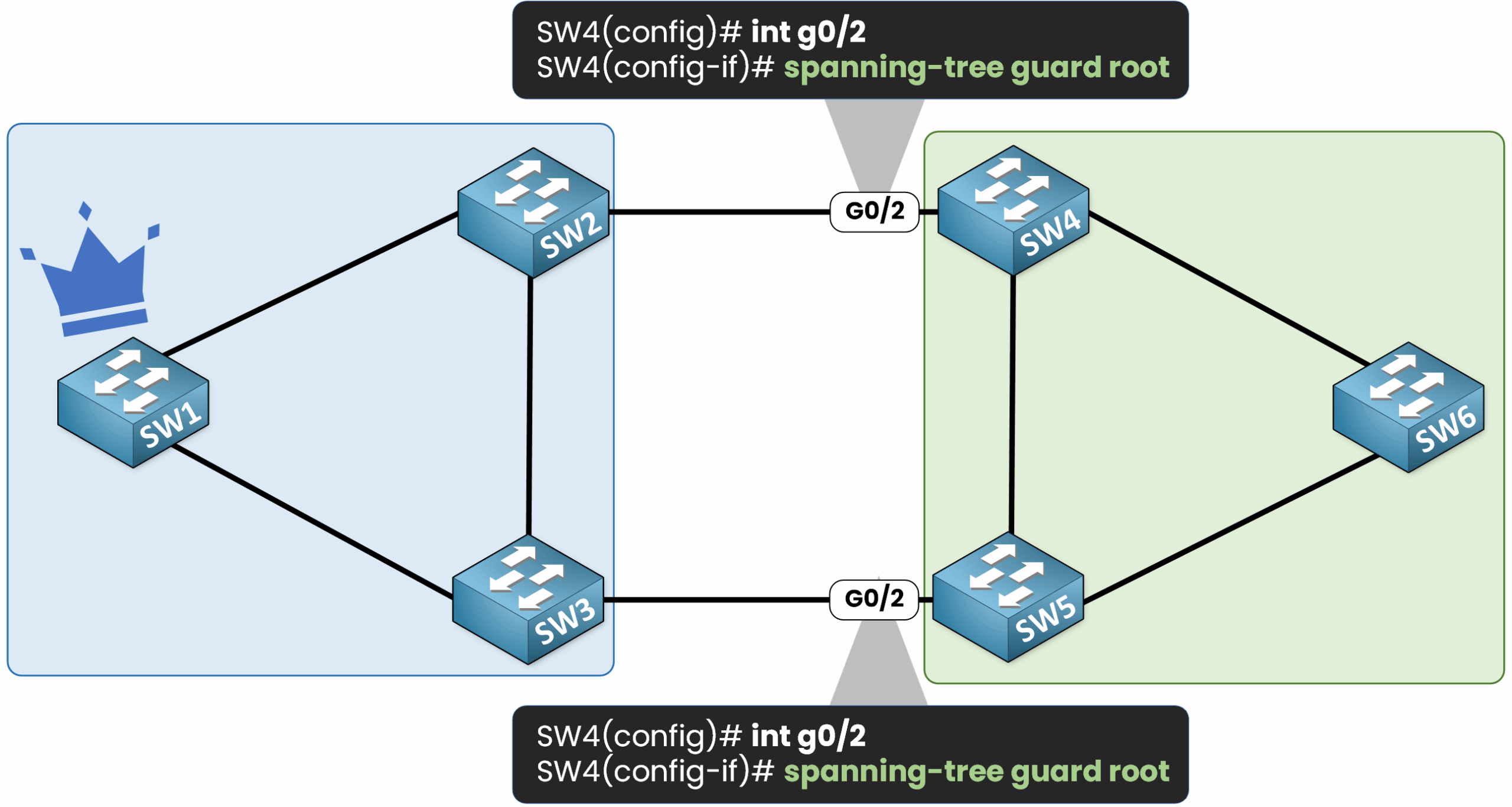
On the interfaces connected to the customer:
SW4(config)# int g0/2
SW4(config-if)# spanning-tree guard root
SW5(config)# int g0/2
SW5(config-if)# spanning-tree guard root
4. What Happens When a Superior BPDU is Received?
When a superior BPDU is received, the affected port is placed into a Blocked state with a status of Root Inconsistent, effectively shutting down the interface.
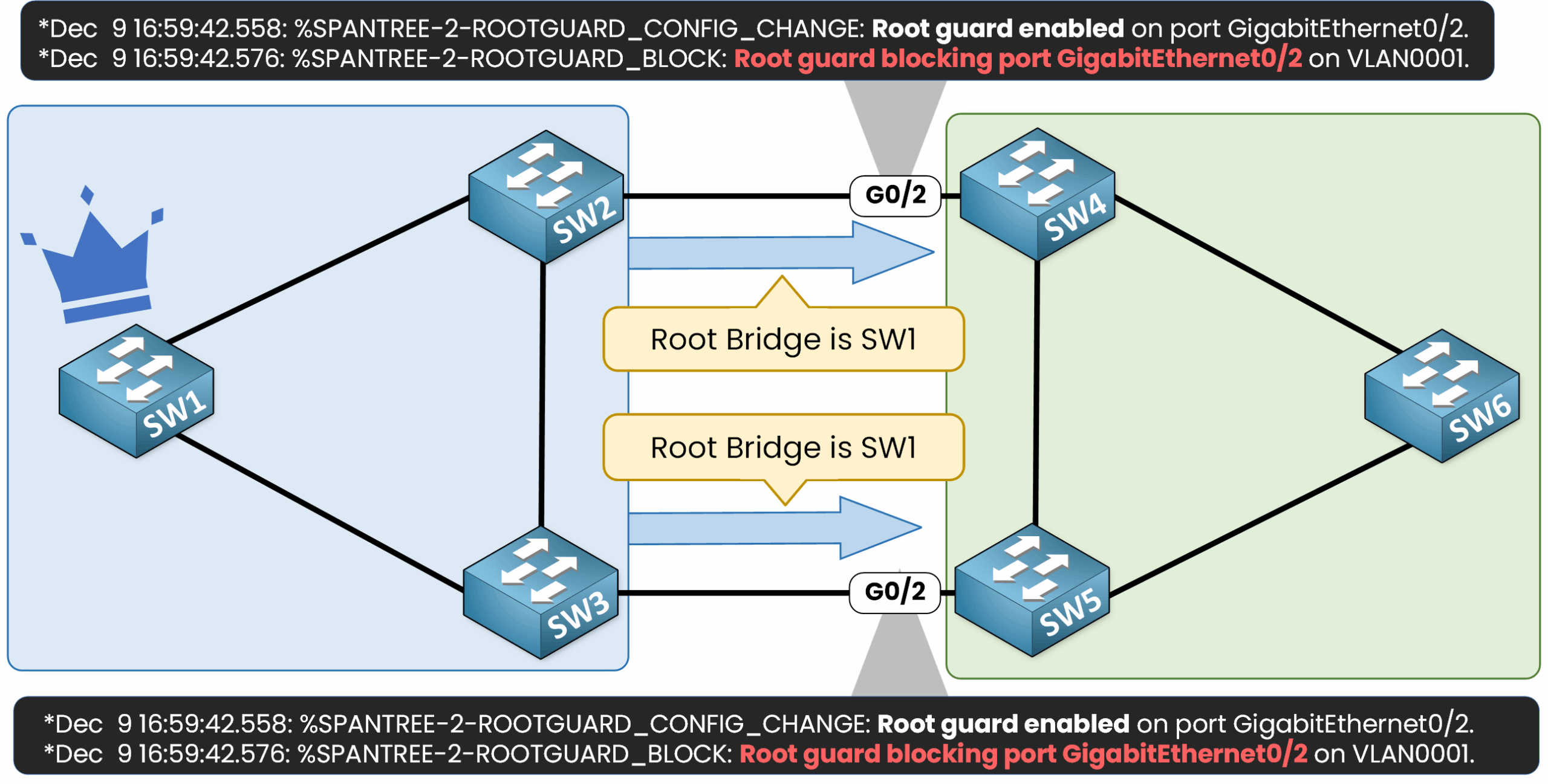
At this point, the blocked interface prevents any traffic from flowing between the customer and the service provider networks.
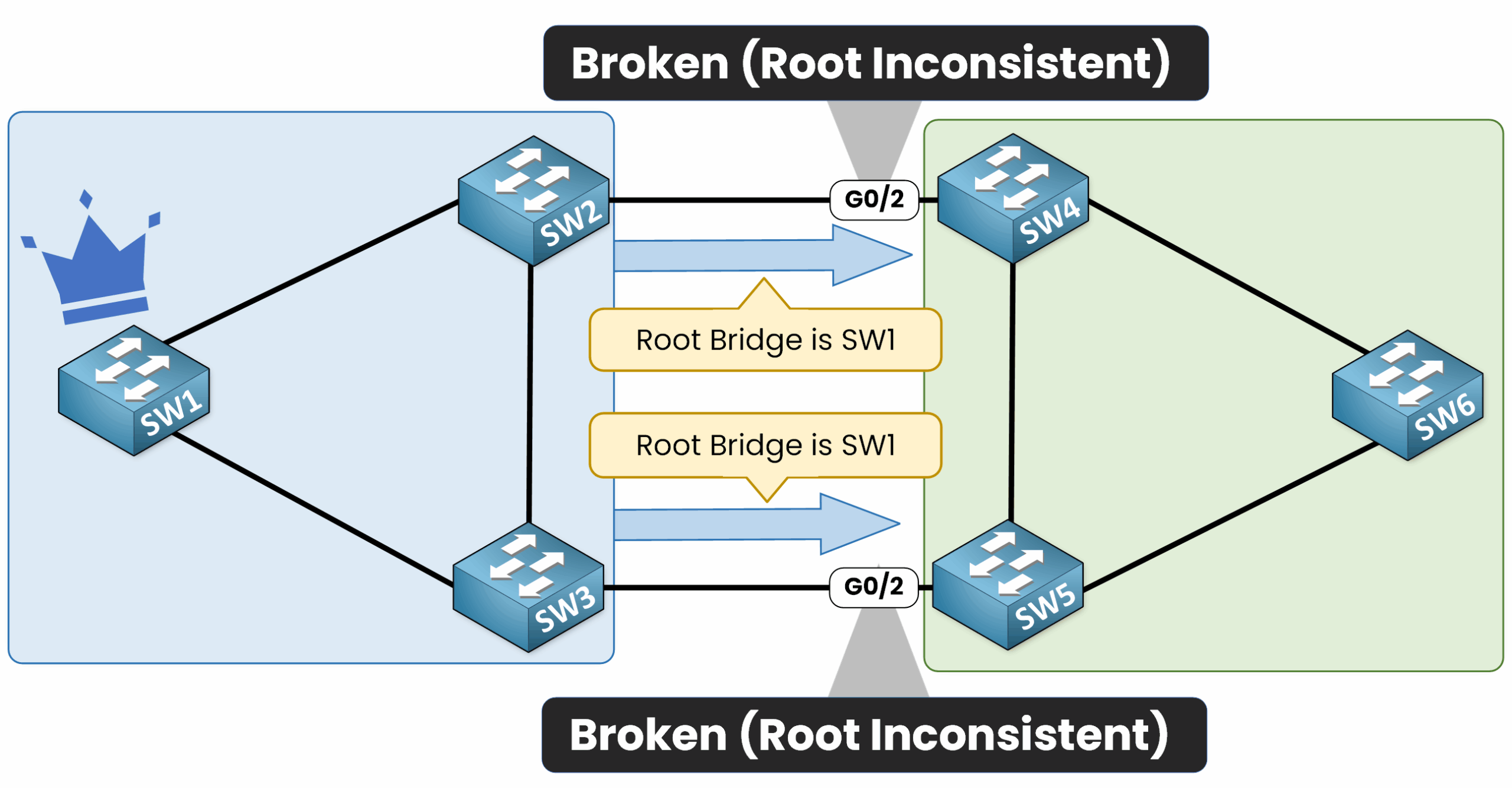
Verifying Port Status
You can verify the status of the port using the following command:
SW4# show spanning-tree interface g0/2
Vlan Role Sts Cost Prio.Nbr Type
------------------- ---- --- --------- -------- ------------------------
VLAN0001 Desg BKN*4 128.3 P2p *ROOT_Inc
SW5# show spanning-tree interface g0/2
Vlan Role Sts Cost Prio.Nbr Type
------------------- ---- --- --------- -------- ------------------------
VLAN0001 Desg BKN*4 128.3 P2p *ROOT_Inc
5. Resolving the Situation
To resolve this issue, we must instruct the customer to increase the priority of SW1 in their STP topology, ensuring that it no longer competes to become the Root Bridge. For example:
SW1(config)# spanning-tree vlan 1 priority 4096
Once SW1’s BID is higher, the port protected by Root Guard will automatically recover after the Max Age timer (20 seconds) expires.
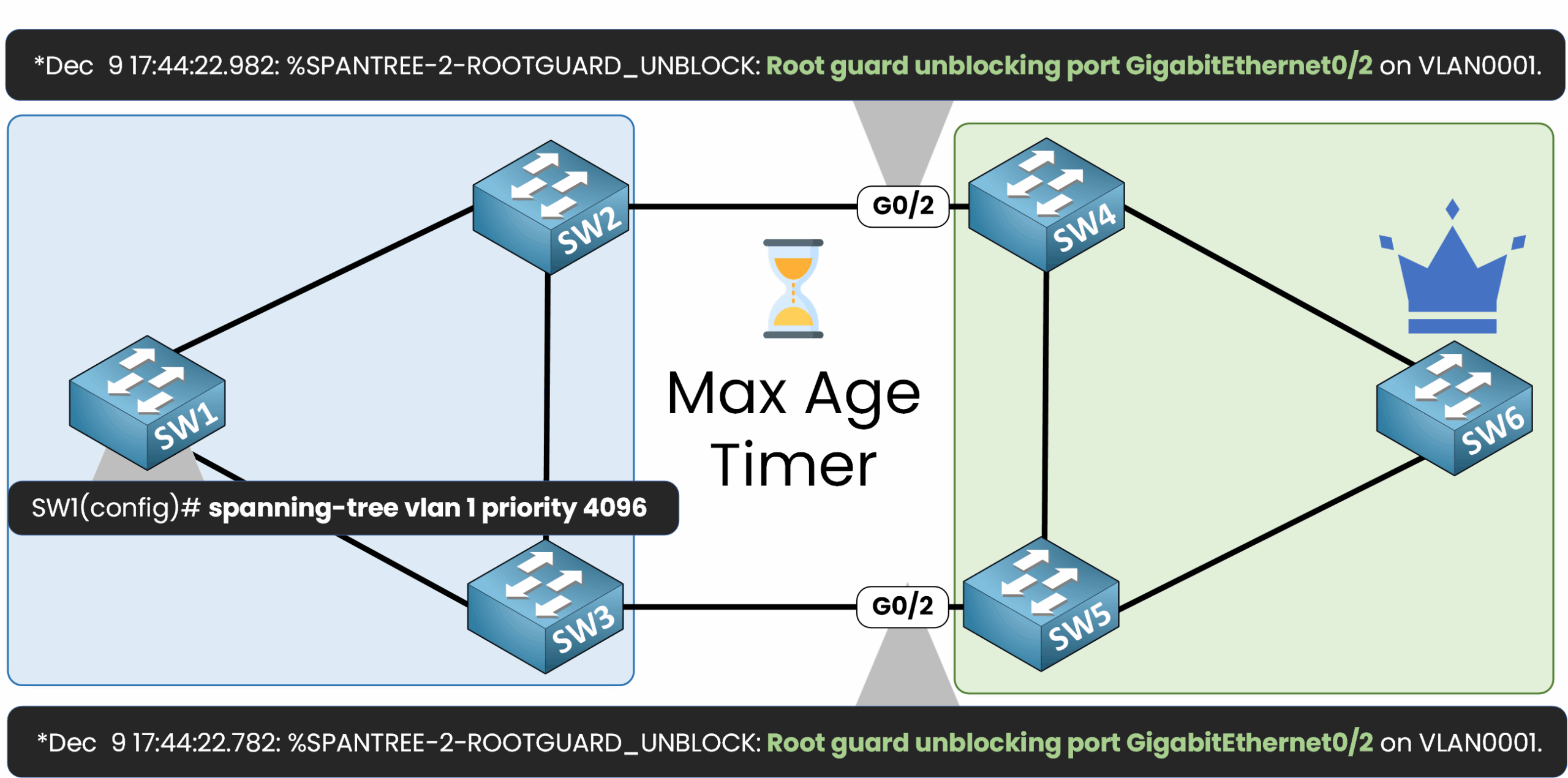
Restoring the Topology
As shown in the output, the Root Guard-protected port is unblocked. The STP topology reconverges, with SW6 resuming its role as the Root Bridge.
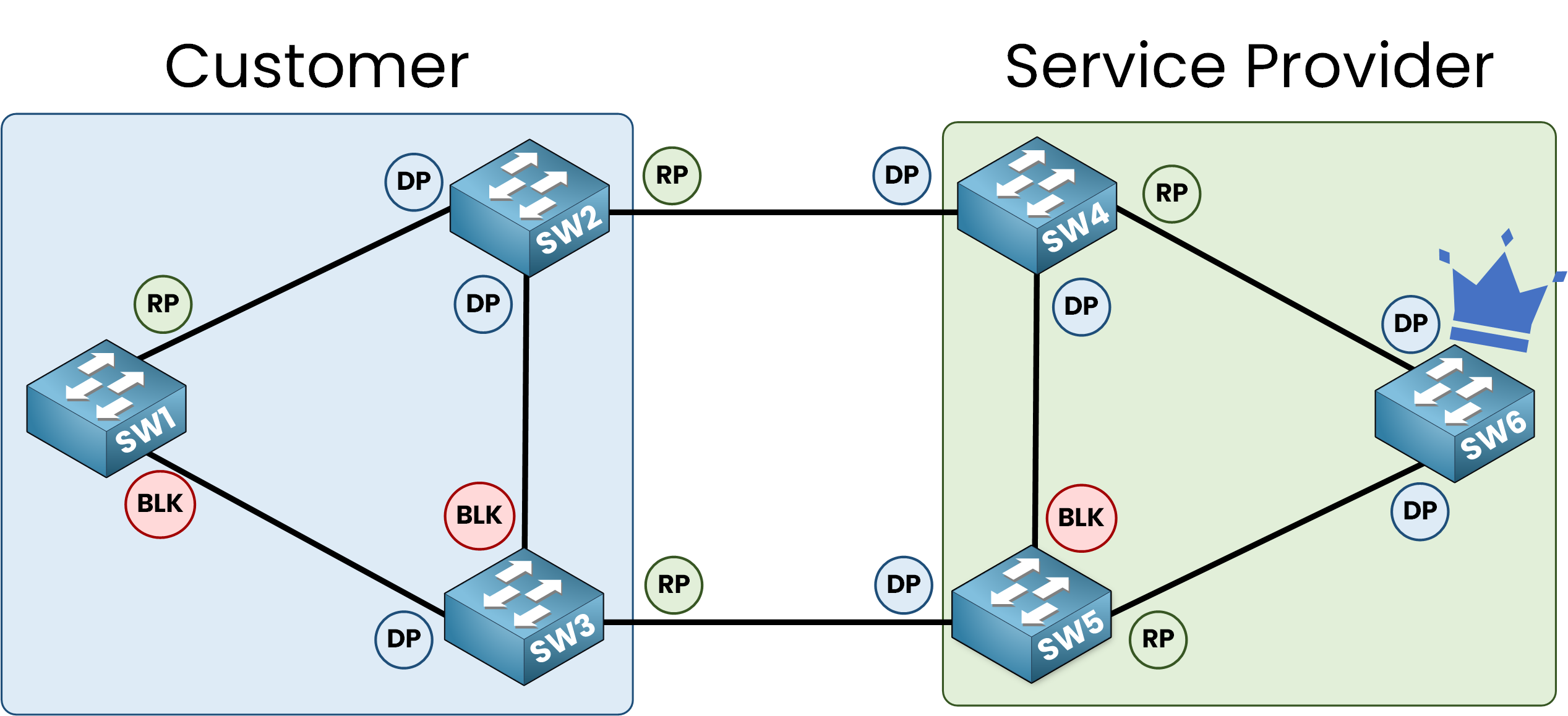
This ensures that traffic between the customer and service provider networks flows correctly.
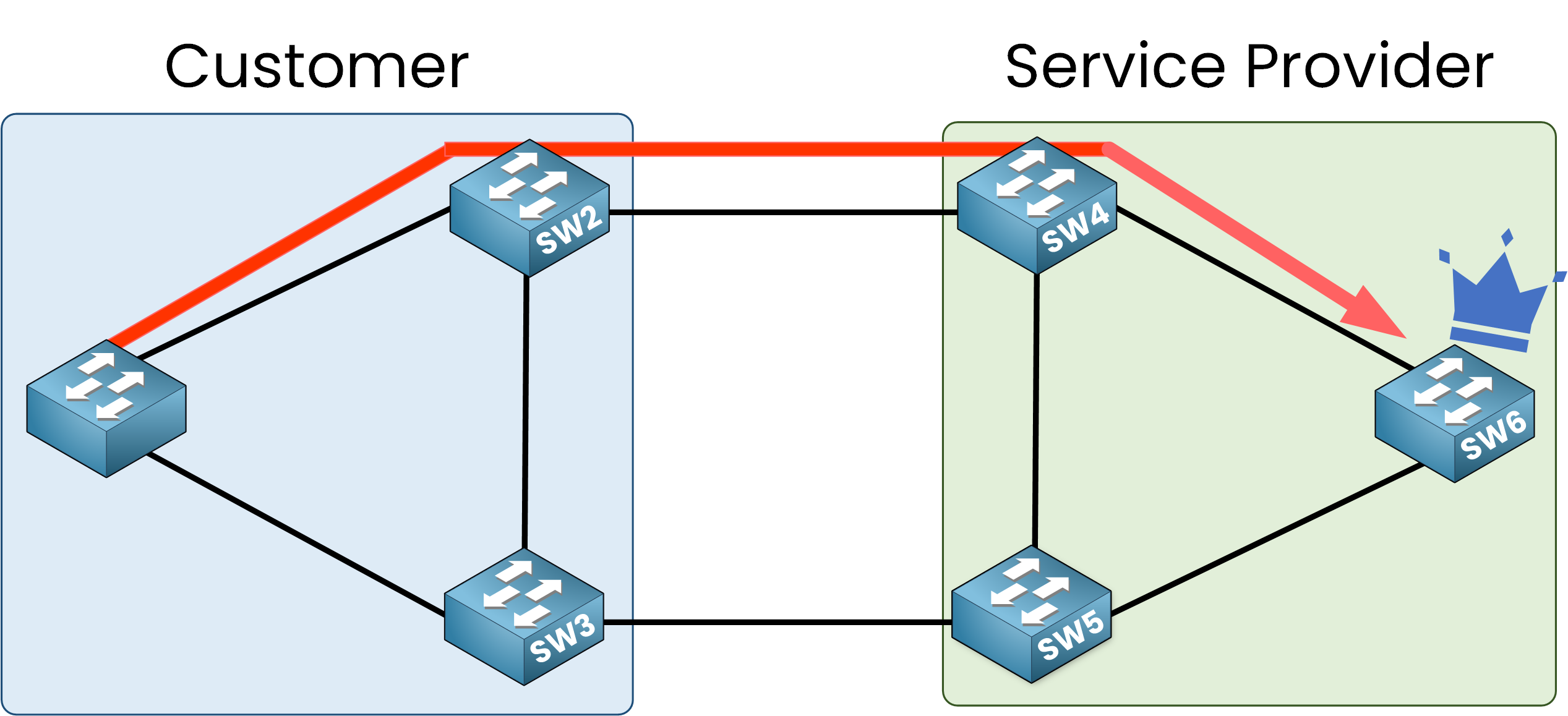
6. Conclusion
Root Guard is a key feature to keep full control of the Root Bridge in your STP topology.
Enabling Root Guard on untrusted ports, typically those facing customer or external networks prevents any device from sending superior BPDUs and seizing the Root Bridge role.
Key points to remember:
- Purpose: Blocks superior BPDUs on protected ports, placing them in the Root Inconsistent state.
- Recovery: Port returns to normal automatically after the Max Age timer (20 seconds) once superior BPDUs stop.
- Configuration:
spanning-tree guard rootunder the interface.
On the next lesson, we’ll see another protection feature for different types of STP failures: Loop Guard.
